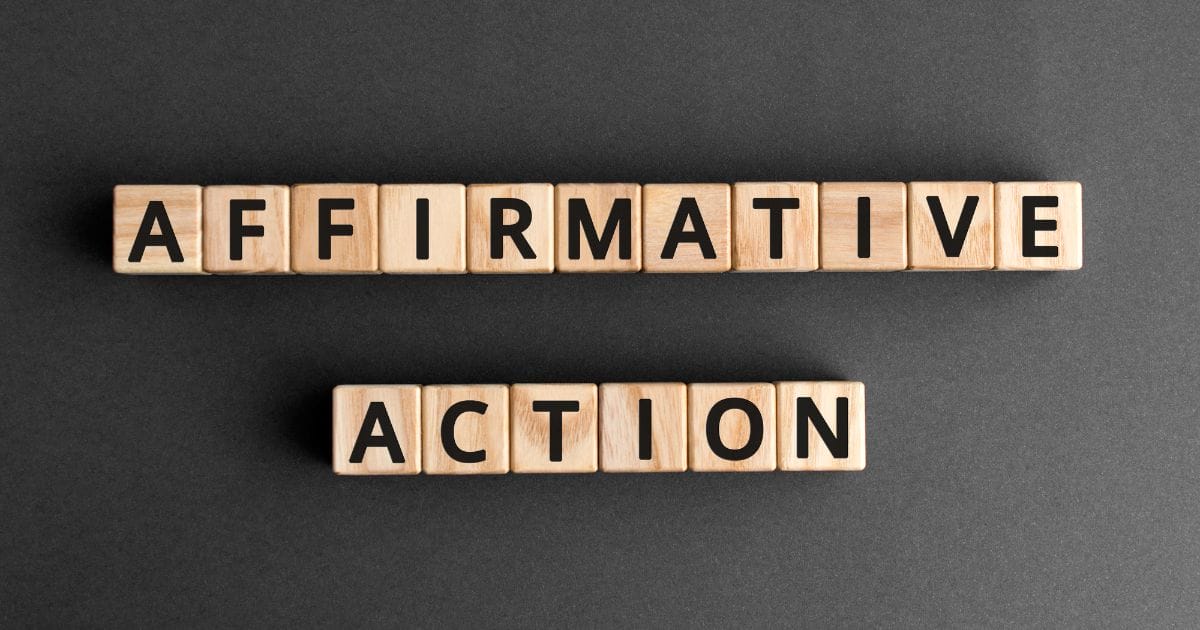In a major blow to affirmative action, the Supreme Court struck down race-based admissions to colleges and universities as unconstitutional and the reaction from Black leaders and elected officials has set the tone for what lies ahead. The ruling will make more student populations whiter, wealthier and less likely to include African Americans and Latinos.
Chief Justice John G. Roberts Jr., writing for the 6-3 majority, said the two programs “unavoidably employ race in a negative manner” and “involve racial stereotyping,” in a manner that violates the Constitution. Though the opinion focuses on higher education, some worry the ruling may lead to changes in corporate initiatives such as diversity, equity and inclusion (DEI) programs.
The reaction has been swift to the decision President Joe Biden called “a disappointment.” Speaking from the White House he said institutions of higher learning “should not abandon their commitment to ensure student bodies of diverse backgrounds and experiences that reflect all of America.”
Rev. Al Sharpton, president of the National Action Network (NAN), condemned the Supreme Court’s decision today to overturn affirmative action in higher education. The 6-3 and 6-2 decisions in two related cases will end decades of safeguards for equal access to education, especially for Black students. Although many expected the Court to end affirmative action, the decision underscores a deep need to reform the court – especially as several justices face ethics concerns amid a rash of actions that have unraveled generations of civil rights,” the civil rights leader said.
“The Supreme Court just stuck a dagger in the back of Black America,” said Sharpton. “Affirmative action was a commonly embraced policy because it served as a check on an admission process that was rife with racism, nepotism, and favoritism for generations. The reality is race plays a factor in admissions, from pre-K to post-doctorate, and institutions just saw their best tool for fairness outlawed.
Let’s not forget this wasn’t a decision supported by higher education institutions. It was pushed by a small group committed to peeling away our civil rights, who want Black and Brown faces out of their ivory towers,” he said.
The NAACP also condemned the conservative-leaning Supreme Court’s decisions and reaffirmed its commitment to supporting equal access to education for Black students.
NAACP President and CEO Derrick Johnson said in a statement that affirmative action exists because institutions of higher education can’t be trusted to enact policies that embrace diversity and inclusion. “We will not allow hate-inspired people in power to turn back the clock and undermine our hard-won victories. The tricks of America’s dark past will not be tolerated,” he said. “Let me be clear – affirmative action exists because we cannot rely on colleges, universities, and employers to enact admissions and hiring practices that embrace diversity, equity, and inclusion. Race plays an undeniable role in shaping the identities of and quality of life for Black Americans.”
At Crusader deadline, the National Urban League planned at 3 p.m. (EST) press conference and a 6 p.m. (EST) virtual townhall with constituents.
Illinois Governor J.B. Pritzker echoed the sentiment and vowed to protect race-based admissions at the state level. In a scathing statement the governor said, “The decision only sets us back,” he said. “But here in the Land of Lincoln and Obama, we will continue to uplift our students of color — promoting inclusion and expanding access through record-levels of funding for higher education institutions and our MAP Grant Program, so that every student has the opportunity to earn a degree.
“The damage caused to Black communities by slavery and Jim Crow Laws, to Hispanics and Native Americans by a legacy of discrimination and oppression has not nearly been reversed,” Pritzker said.
The Congressional Black Caucus (CBC) said the decision is a reflection of the Supreme Court and not the U.S.
“By delivering a decision on affirmative action so radical as to deny young people seeking an education equal opportunity in our education system, the Supreme Court has thrown into question its own legitimacy,” the CBC said in a statement.
The case brought by a conservative activist began with two concerns, one at the University of North Carolina (UNC), which until the 1950s did not admit Black students, and the other at Harvard University, which was the model for the Supreme Court’s 1978 decision declaring that colleges and universities may consider race as one of many factors, from the applicant’s background including whether the applicant is the child of the school’s alumni.
Because UNC is a state school, the question was whether its affirmative-action program violates the 14th Amendment’s guarantee to equal protection of the law. Though Harvard is a private institution, federal anti-discrimination laws have a say in its policies because it accepts federal money for a wide variety of programs.
“The Harvard and UNC admissions programs cannot be reconciled with the guarantees of the Equal Protection Clause. Both programs lack sufficiently focused and measurable objectives warranting the use of race, unavoidably employ race in a negative manner, involve racial stereotyping, and lack meaningful end points. We have never permitted admissions programs to work in that way, and we will not do so today,” Justice Roberts wrote.
The majority opinion claims that the court was not expressly overturning prior cases authorizing race-based affirmative action and suggested that how race has affected an applicant’s life can still be part of how their application is considered.
Associate Justice Sotomayor led the dissent in the Harvard case that was joined by Associate Justices Elena Kagan, Ketanji Brown Jackson, the latter of whom led the dissent in the UNC case.
“The court’s decision “rolls back decades of precedent and momentous progress,” Justice Sotomayor said in her dissent. “It holds that race can no longer be used in a limited way in college admissions to achieve such critical benefits.”






